With a height of up to 2.5 m, this is the biggest of the Tylecodons. It is also the most widespread, from the Auas Mts. in central Namibia to Worcester and Steytlerville in the south and southeast. The species seems to prefer stony slopes, but in South Africa it is also found on sand along the western and southern coastline.
The plants have fat yellowish stems (up to 0.6 m in diameter and usually undivided), with peeling bark.
The branches are over 2 cm thick and bear leaves 5-12 cm long and 2-10 cm wide which are usually finely hairy in young plants and hairless in older ones.
The flowers appear in October -January, by which time the plants have shed their leaves. The corolla tubes are 1.2-1.6 cm long, yellowish to red, whereas the lobes are orange and 1-1.3 cm long. The flowers are pollinated mainly by sunbirds.
Because the plants tends to grow in groups, they often make wonderful displays when flowering.
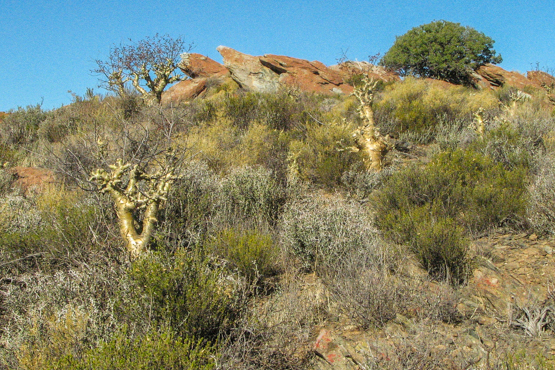
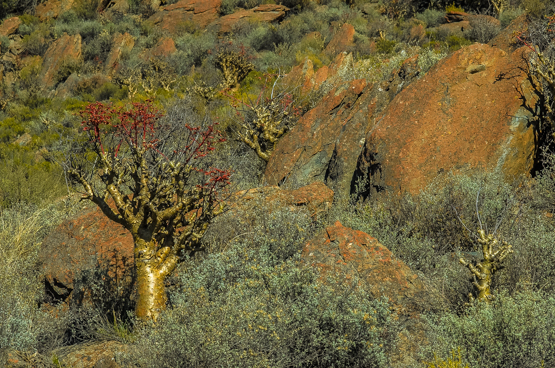
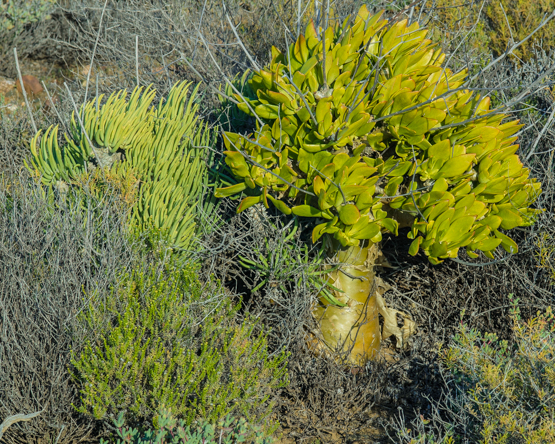
On left T. wallichii
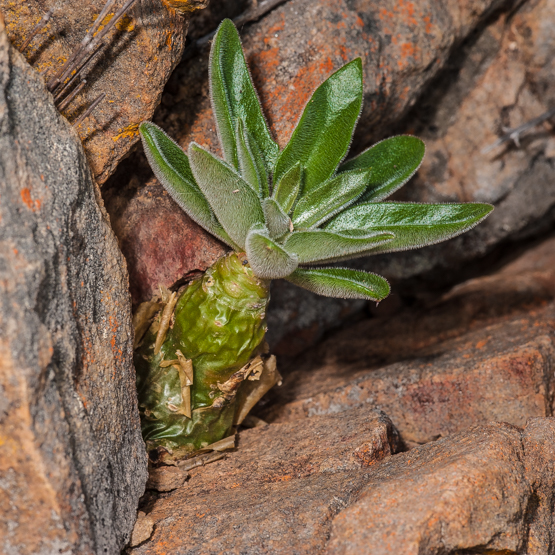
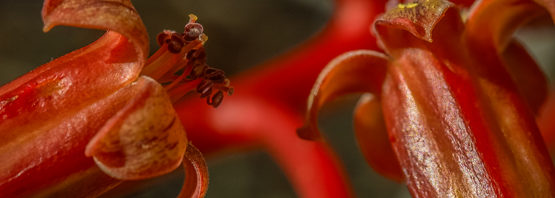
Hi,
We are staying in the Klein Karoo, near DeRust.
I notice a number of Botterbome toppled over, and dying. The trees are growing in the veld, on the Southern face of the foothills of the Swartberge.
What would the reason for this be?
Hello,
Without seeing the plants it’s difficult to say anything useful. You could try Jan Vlok (of “Plants of the Klein Karoo” fame): janvlok@mweb.co.za.
He lives in the area and might be able and willing to come and have a look. Good luck!